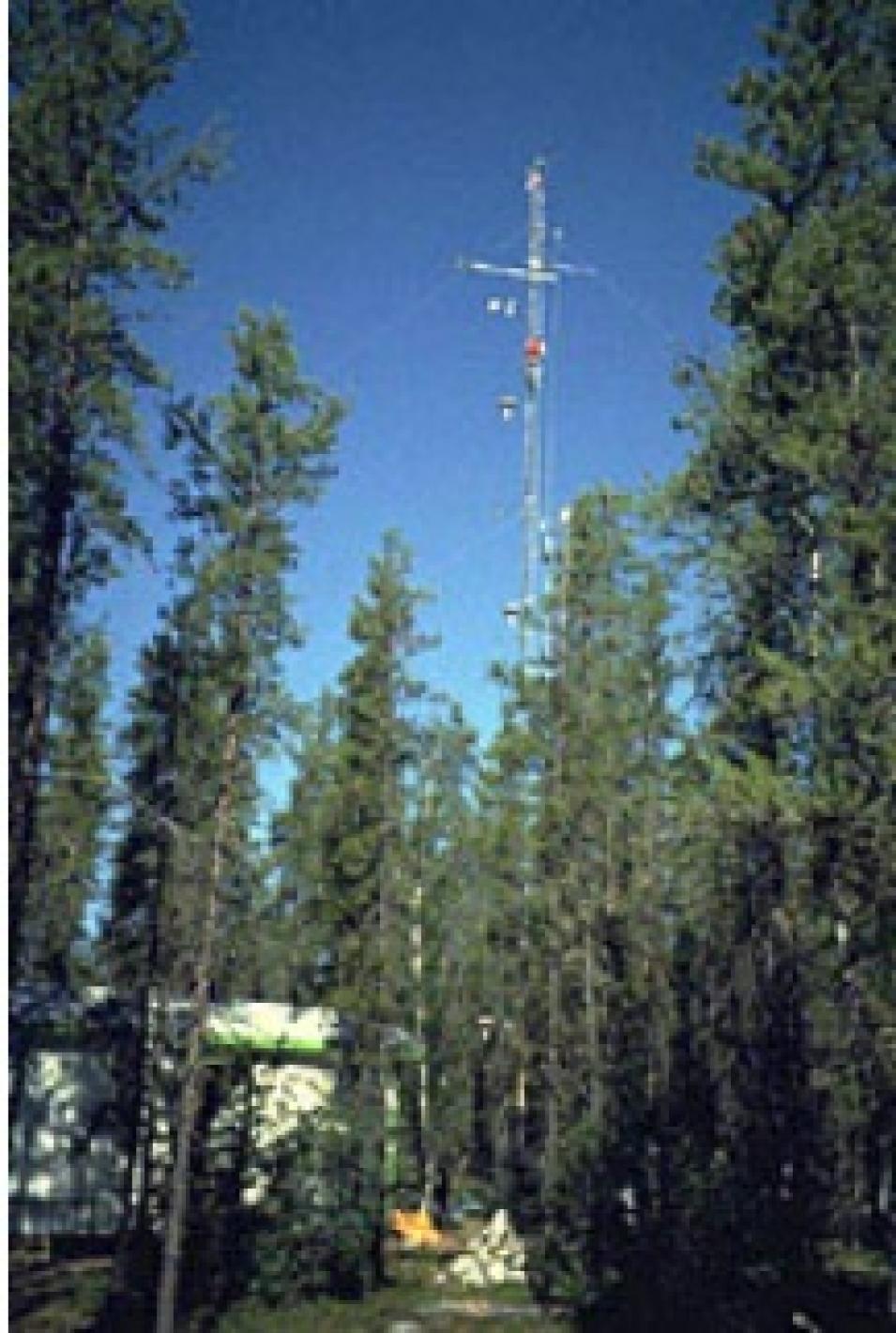"The soils of boreal forests store an enormous amount of carbon," says Goulden, explaining that the amount of carbon stored in the soil is more than the carbon stored in the moss layer and wood of boreal forests. Boreal forests cover about 10 percent of the Earth's land surface, but contain 15 to 30 percent of the carbon stored in the terrestrial biosphere. Most of this soil carbon is found in deep layers, about 40 to 80 centimeters below the surface, where the ground remains frozen for most or all of the year. Thick sphagnum and feather mosses help insulate the frozen soil, preventing it from thawing and releasing carbon.
In forest ecosystems carbon is usually released through the processes of decomposition in forest ecosystems. Dead leaves, fallen trees, and other decomposing plant material release carbon directly into the atmosphere. However, in wet or cold areas, this layer often accumulates and becomes buried before it decomposes. This intact matter is responsible for the high carbon content found in boreal soils.
Measuring the gain or loss of soil carbon is no easy task. Sampling the soil directly is nearly impossible because soil carbon occurs in patches. One area may yield a high carbon content, yet a similar area only ten feet away may yield very little carbon.
Instead, Goulden and his team gathered indirect measurements. One method involved eddy covariance, which measures respiration, or the exchange of trace gases (such as carbon) between forest and atmosphere. Goulden's team also placed small chambers on the moss surface to measure respiration from the soil. In addition, they analyzed air temperatures as well as temperatures in the moss layer and in the soil at depths of 20 to 100 centimeters below the surface.
Each of the separate measurements consistently pointed to a single conclusion, he says. A large increase in decomposition in mid summer coincided with deep-soil warming and an increase in the volume of unfrozen soil. In other words, the soil was melting and releasing CO2 through increased respiration. "Assessing the carbon balance of forest soil is tricky, but if you've got several pieces of evidence all showing the same thing, then you can really start to believe that the site is losing soil carbon," says Goulden.
Carbon loss from boreal soil has frequently been underestimated in global climate models, according to Goulden.
He explains, "Our findings on the importance of soil thaw and the general importance of the soil carbon balance is already influencing the development of models for carbon exchange."
In particular, the data are being used to validate and test models. By including extensive ground-based studies, BOREAS provides scientists with measurements that cannot be obtained by aircraft or satellite. This allows modelers to compare their predictions with actual measurements of carbon exchange. Some scientists split the data, using some measurements to develop a model and other measurements to test it. While the most significant contribution may be to carbon exchange models, Goulden says that these data are also being used to refine meteorological and hydrological models as well.
BOREAS was a three year study completed in December 1996, consisting of 85 different science teams, divided into six areas of expertise. The short term project with it's variety of measurements and observations of physical processes will aid in the development of improved process models. A special issue of the Journal of Geophysical Research, published in December 1997, describes the research conducted in BOREAS.
Transfer of BOREAS data to NASA's Oak Ridge National Laboratory Distributed Active Archive Center (ORNL DAAC) began December 1996. Initial data sets consisted of satellite image files. Field measurements are expected to be the last data made available.
The data will be available to the public as they are incorporated into the ORNL archive and have been approved for release by BOREAS and the principal investigator of each project. For more information, visit ORNL DAAC.
For more information on the carbon cycle and boreal forests see The Mystery of the Missing Carbon.
Currently, the data that Goulden and his colleagues collected are available through ORNL DAAC in Oak Ridge, Tennessee. While the BOREAS project itself is complete, ground measurements are still being collected, and Goulden and Wofsy have submitted a proposal to continue the measurements for another three years.
Although Goulden is cautious about applying their findings to similar boreal areas such as those in Alaska or Siberia, he sees the potential to combine groundwork similar to that conducted during the BOREAS project with remote sensing. "If we could figure out how to use the satellites plus our measurements to extrapolate to other areas, that's how we're ultimately going to solve these questions at larger scales."
References
Goulden, M. L., B. C. Daube, S. -M. Fan, D. J. Sutton, A. Bazzaz, J. W. Munger, and S. C. Wofsy. 1997. Physiological responses of a black spruce forest to weather. Journal of Geophysical Research102(D24):28,987-28,996.
Goulden, M. L., S. C. Wofsy, J. W. Harden, S. E. Trumbore, P. M. Crill, S. T. Gower, T. Fries, B. C. Daube, S. -M. Fan, D. J. Sutton, A. Bazzaz, and J. W. Munger. 1998. Sensitivity of boreal forest carbon balance to soil thaw. Science 279 (5348): 214-217.
For more information
NASA Oak Ridge National Laboratory Distributed Active Archive Center (ORNL DAAC)
Boreal Ecosystem-Atmosphere Study (BOREAS)
The Mystery of the Missing Carbon
| About the remote sensing data used |
| Data |
Boreal Ecosystem-Atmosphere Study (BOREAS) |
| Parameter |
carbon flux and permafrost melt |
| DAAC |
NASA Oak Ridge National Laboratory Distributed Active Archive Center (ORNL DAAC) |
